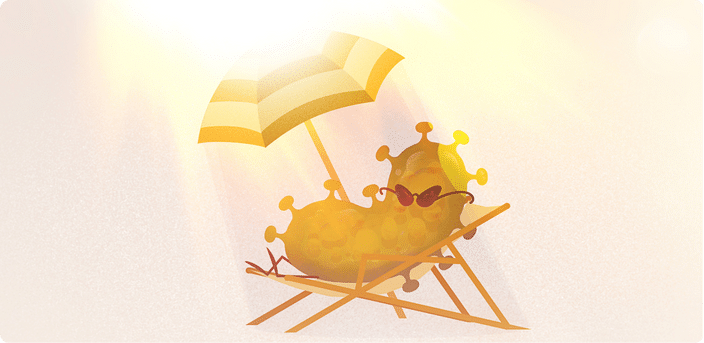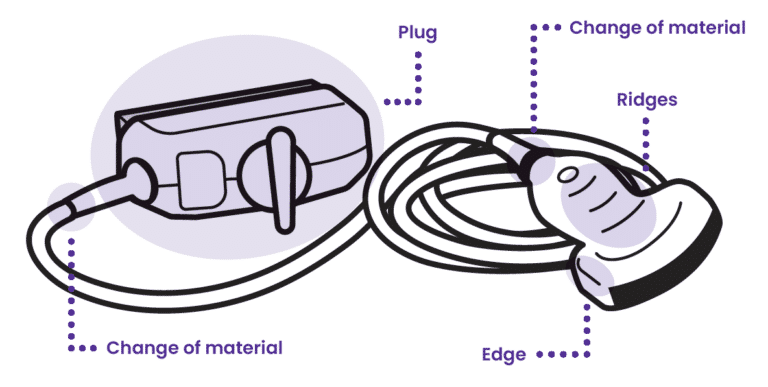Navigating the Shadows – Shadowing
UV light travels in a straight line, and objects obstructing its path can create shadows by preventing the passage of light. When UV light is blocked, it fails to reach specific areas during disinfection, posing a risk of inadequate disinfection in those regions.
Some ultrasound devices may have complex shapes or surface textures that create a challenge in achieving uniform exposure to UV light, potentially resulting in areas where disinfection will be unsuccessful.
Surface topography refers to the physical features of a surface/device and includes complexities such as indentations, contours, textures, and any irregularities in shape. These complexities can block the light from reaching the surface beneath, causing shadowing. Most chemical products will not have an issue reaching these areas as additional attention can be paid by the user. Products such as foams may even get into surface scratches where pathogens reside.
In contrast to alternative disinfection methods, UV-C disinfection offers limited penetration depth. Consequently, it cannot effectively penetrate solid or liquid residues that may persist on surfaces with equal intensity. Therefore, if any soiling or moisture remains on a surface prior to UV-C exposure, the light will not reach all areas for disinfection, potentially leaving spots where microorganisms could persist.
Example:
UV disinfection is commonly employed for disinfecting organic fruit produce. A study evaluated how the surface roughness of fruit impacts the effectiveness of UV-C treatment.
Fruits like apples, which have smoother surfaces, were shown to have significantly higher reductions in organisms compared to those with more intricate surfaces, such as peaches, raspberries, and even pears. It was concluded that this was down to the subtle roughness of the fruit surface compared to that of an apple.
The premise of this study applies to all surface types. Ultimately, surfaces with varying textures or complexities are anticipated to pose a challenge for light exposure, making it difficult for light to reach all areas of the surface.
(M.S. Roopesh et al., 2012)5
Surface scratches on older, used devices can equally contribute to the effect of shadowing. UV-C radiation is capable of damaging plastics integral to ultrasound devices, and this raises concerns about potential surface cracking with prolonged exposure. Such cracks could exacerbate the risk of shadowing, potentially shielding harmful pathogens from disinfection.
References
5M.S. Roopesh, Lu, X., Sablani, S.S., Sunil Kumar Insan, Adhikari, A., Killinger, K., Rasco, B., Dhingra, A., Bandyopadhyay, A. and Annapure, U.S. (2012). Inactivation of Escherichia coli Population on Fruit Surfaces Using Ultraviolet-C Light: Influence of Fruit Surface Characteristics. Food and Bioprocess Technology, 6(11), pp.2959–2973.

